Ficus is one of the most popular indoor plants. Representatives of this type look equally impressive both in residential premises and in offices. Such a variety as Benjamin's ficus is distinguished by small leaves that are clearly visible in the photo, a dense crown, ease of care at home and high decorative qualities.
Content
Grade characteristics
This species belongs to the evergreen perennials of the Mulberry family. Among its representatives there are trees and shrubs. The species is characterized by erect shoots that lignify over time. The bark is light gray. There are brown touches throughout the surface. Representatives of the species are distinguished by lush crowns consisting of drooping branches.
The decorative value of a plant is represented by its leaves. Depending on the variety, they may have a plain green color or differ in variegated “inserts” on a green background. Sheet plates are thin, glossy. They have an oblong oval shape with a pointed edge. The edges are solid. The central vein is not particularly distinguished. Leaves are arranged on branches alternately with petioles.
The view of Benjamin is characterized by a large number of varieties. The most common hybrids are:
- Safari. Small-leaved variety. It differs by boat-shaped leaves with a curved edge. The color of the plates is marble: on a dark green background there are many strokes and spots of a milky cream shade.
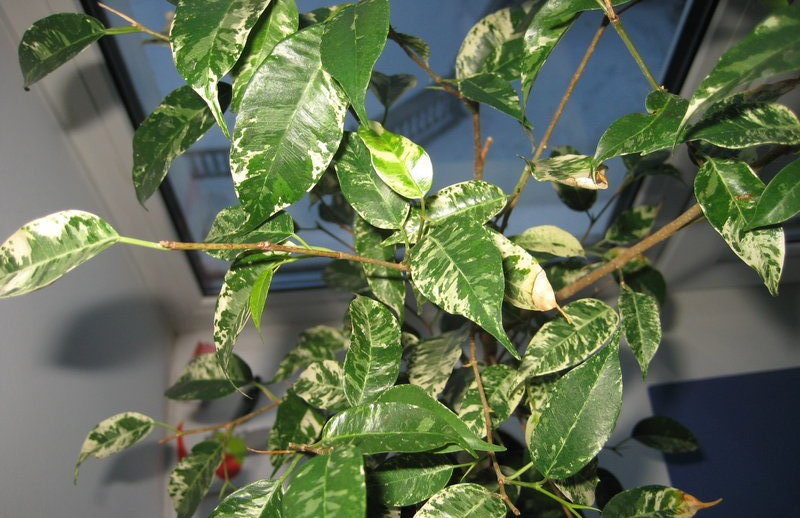
Safari - Baroque. Medium sized leaf plates are curled with a tube across the central vein. It is characterized by a saturated dark green color of leaves.
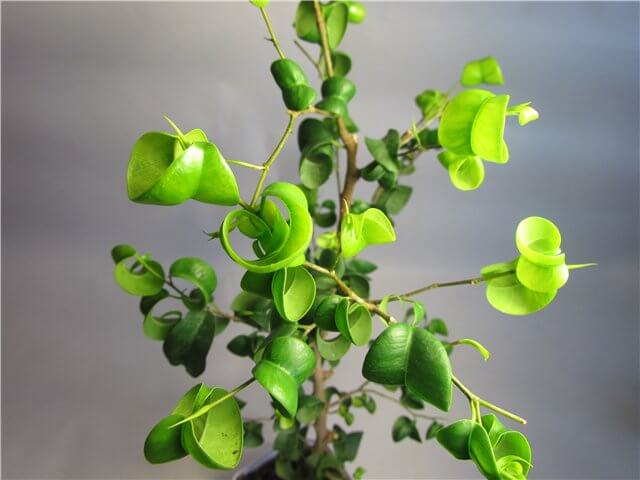
Baroque - Naomi Gold. It differs in large wide leaves with a wavy edge. Distinguish Naomi Gold ordinary with dark green plain leaves and Naomi Gold variegated. The latter is two-toned: dark green spots are present on a bright salad background.
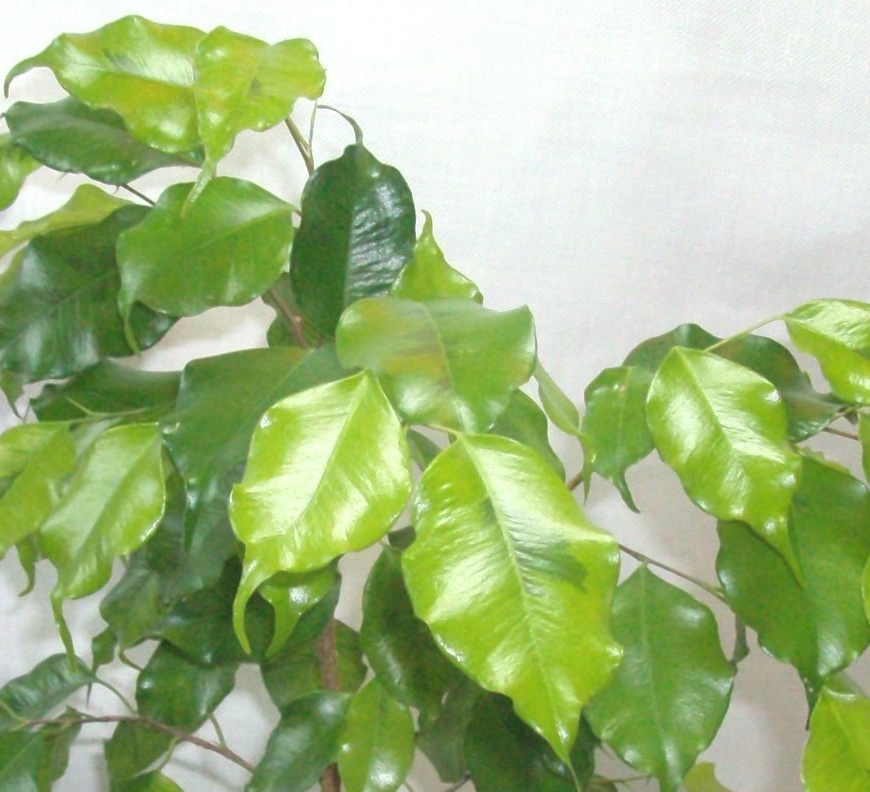
Naomi Gold - Kinky. Small-leaved variety. It differs in direct light green leaves with an uneven border of light green or cream color.
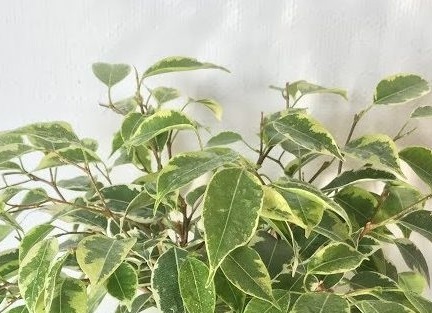
Kinky - Starlight. Middle leaf variety. It is characterized by boat-shaped leaf plates with a slightly wrapped edge. On a dark green leaf there is a wide white border. Sometimes it covers the entire surface of the plate.
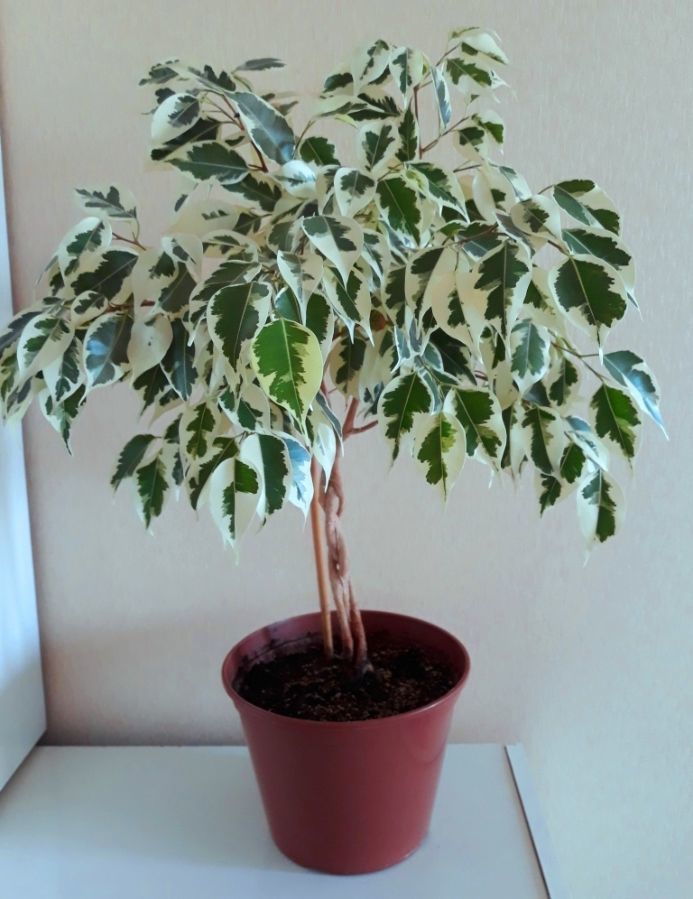
Starlight - Natasha Small-leaved variety. It is characterized by bright green boat-shaped leaves with a bent tip. The color of the plates is solid.
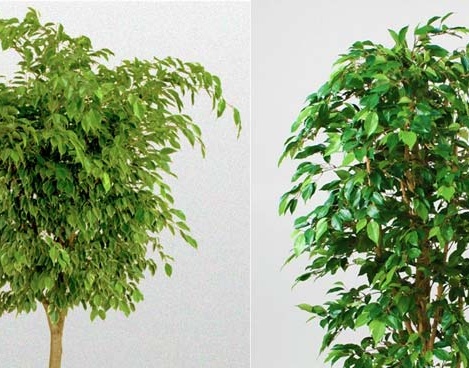
Natasha - Nicole. Small-leaved hybrid. It differs in plates bent along the central vein. The color of the plates is two-tone: light green with cream inserts.
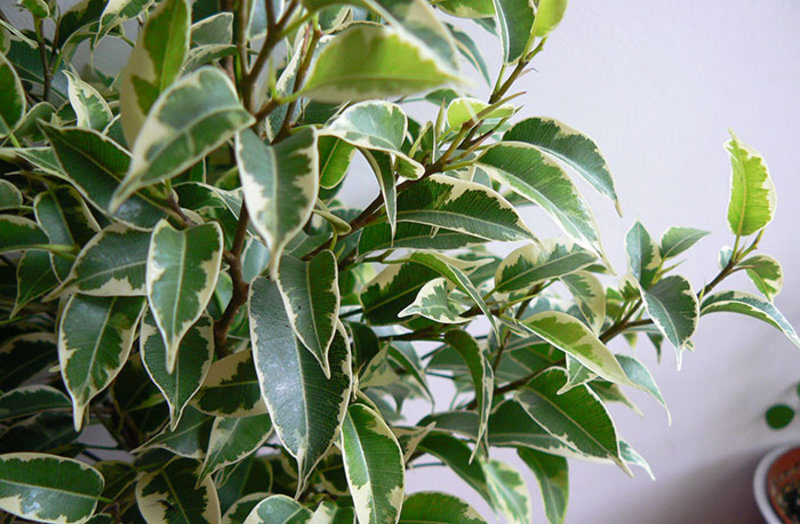
Nicole - Monique Large-leaf variety. It is characterized by very thin branches and wavy leaves of a light salad shade.
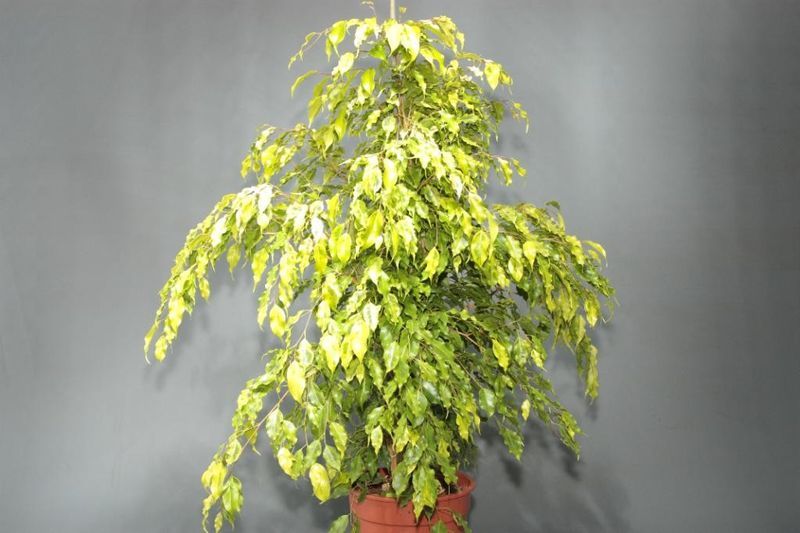
Monique - Wendy. The variety is characterized by small leaves, slightly tucked along the central vein. The color of the plates is solid, bright green. Variety Wendy has an unusual trunk, which periodically changes the growth vector. Due to this feature, the trunk of this ficus has a zigzag shape.
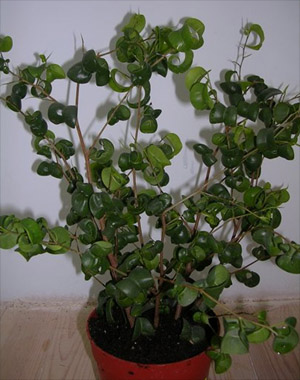
Wendy - El Dorado. This variety is very similar to Ficus Safari. The main difference is the size of the sheet plates. Eldorado has much larger leaves.
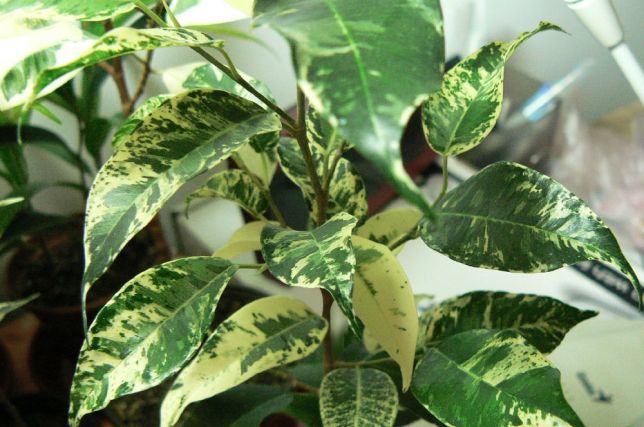
El Dorado - Kurly. Medium leaf ficus with wavy leaves of unusual color. On a dark green background of the plates there is milk speck of different sizes.Some plates are completely dairy.
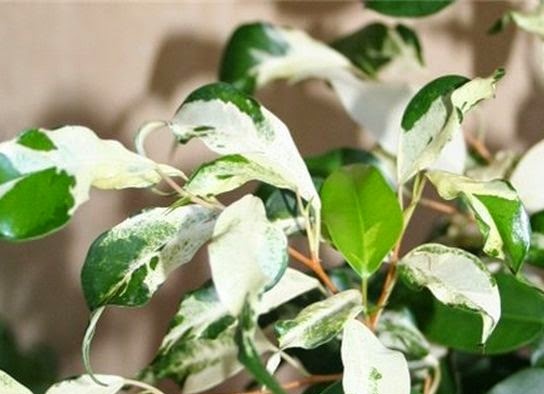
Kurley - Twilight. Outwardly, the variety resembles ficus Starlight. In contrast, Twilight leaves have a thinner rim.
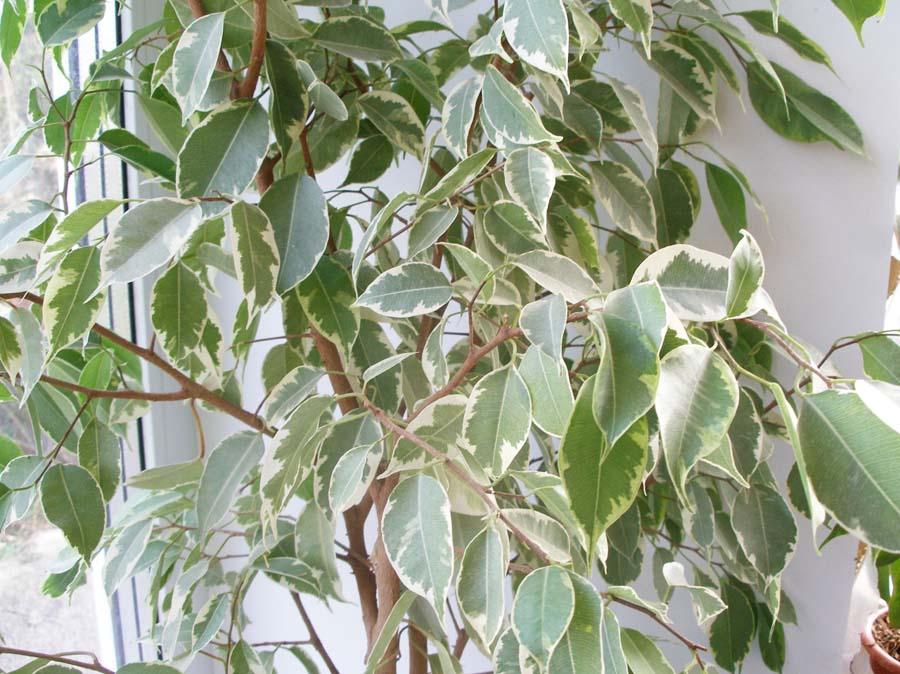
Twilight
Work with the plant should be very careful. In places of damage to plants, toxic milky juice appears. For the same reason, the flower should be kept away from children and pets.
Benjamin Ficus Care at Home
Ficus grows in warm areas with a high level of humidity. Therefore, for the successful cultivation of its indoor species, it is necessary to create conditions as close as possible to natural ones.
Temperature and humidity
The room temperature depends on the life processes of the plant. During the active vegetation period, which lasts from April to October, the flower is comfortable at a temperature of 25-30 degrees. From mid-autumn, it should be gradually reduced so that by winter it would be no more than 20 ℃. It should not be too cold.
Water temperature for irrigation and soil also plays an important role. Ficuses are recommended to be watered with very warm water. Soil cooling is unacceptable. These plants are afraid of drafts, so they are not placed next to the front door and windows with windows.
Ficus is grown in high humidity. They require constant spraying, wiping with a damp towel. In summer, flowers are placed under a warm shower.
Shine
Solid leaf varieties require diffused light. Such flowers can be put in partial shade. Variegated varieties require more light. Usually they are placed on the southern windows, covered with a curtain during the peak activity of the sun. Lack of lighting leads to the loss of decorative color.
On cloudy days, flowers may require additional lighting. For this, phytolamps or ultraviolet lamps are sent to them. It should be remembered that the minimum distance between the flower and the lighting device should be at least half a meter.
Watering and feeding
The correct scheme for watering ficus does not exist. The plant is watered based on its individual needs. During active growth, it is watered as the top soil layer dries, preventing its hardening and waterlogging. In winter, the flower should be watered less often: weekly watering with a small amount of water is enough.
The plant needs fertilizer with minerals. Mixtures for decorative and deciduous houseplants are well suited for complementary foods. Good fertilizer should be saturated with nitrogen.
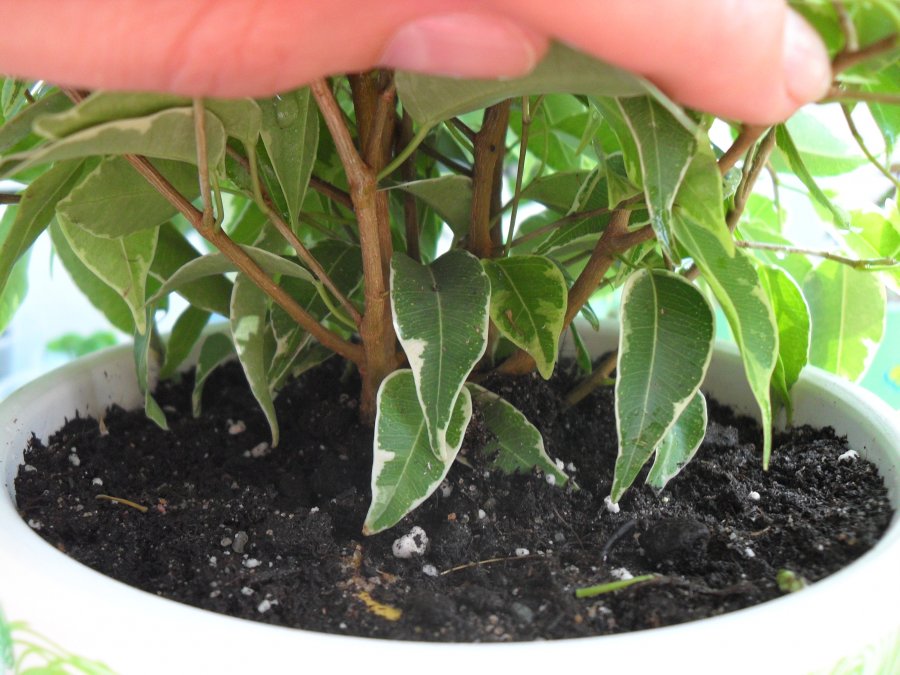
Nutrient is administered twice a month during the growing season. During rest, the ficus does not need fertilizer.
Diseases, pests and control measures
Plants can be affected by the following diseases:
- Root rot.
- Anthracosis.
- Cercosporosis.
- Botritis.
Fungicides are used to fight diseases. They are easy to purchase at any flower or hardware store. Florists recommend drugs Topaz, Fundazol, Phytocide.
Ficus can become a victim of the following harmful insects:
- aphid;
- scale shield;
- spider mite;
- mealybug;
- thrips;
- nematode.
Many gardeners recommend eliminating pests by treating ficus with a soap solution. More effective is the treatment with insecticides.
Reproduction and transplantation of ficus at home
The most common methods of propagating ficus are such methods;
- cuttings;
- air layering.
Propagation by cuttings provides for such actions:
- A branch of about 10-15 cm (cuttings) is cut from an adult tree.
- All leaves are removed from the stalk, leaving only a couple of top leaves.
- A twig is treated with a growth stimulator (optional).
- The stem is rooted in the soil for ficus and covered with a cap.
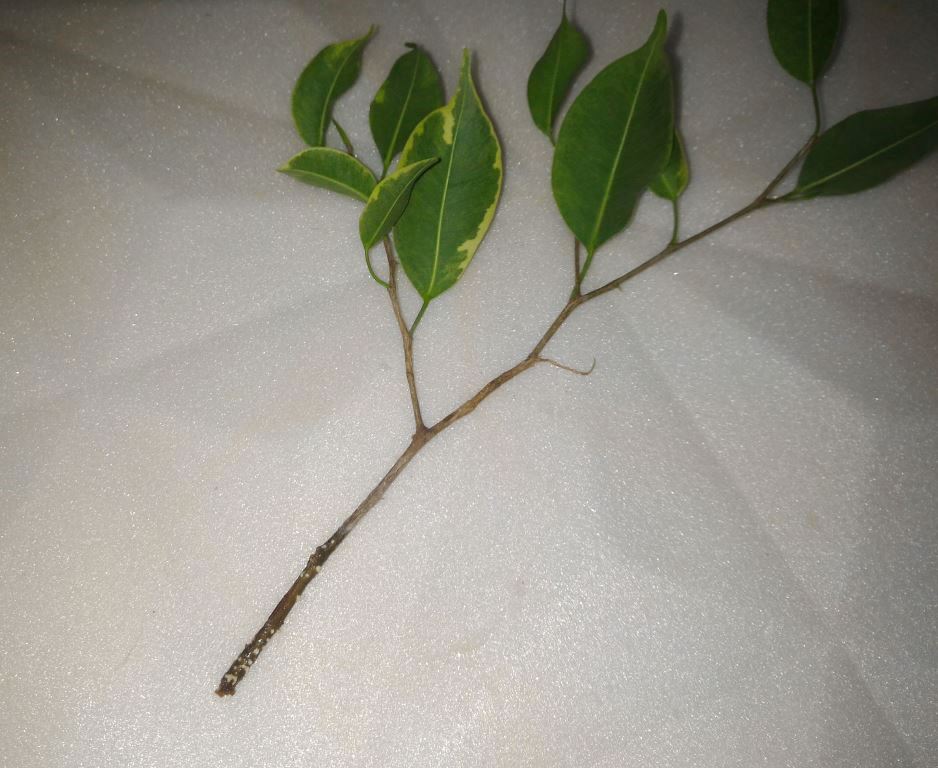
The shank needs daily spraying and a half-hour ventilation. Transplantation is possible only after the appearance of several fresh leaves.
To propagate by layering, you must perform the following steps:
- An incision is made on the stem. Its depth should correspond to about a third of the thickness of the stem.
- The incision site is treated with a growth stimulator (optional).
- The notched stalk is wrapped in wet sphagnum moss.
- Moss is fixed with a transparent film.
When aerial roots become visible under the film, the stem is cut and rooted in the soil.
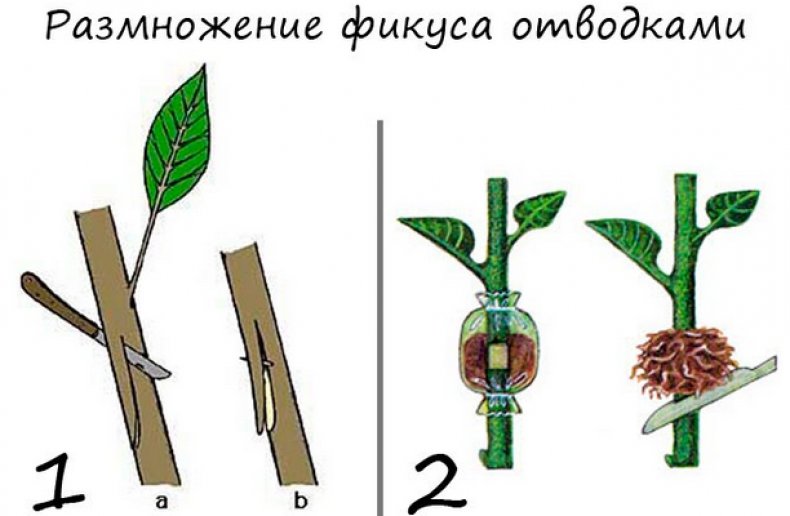
At home, you can also get a plant from seeds. The advantage of this method of reproduction is a large number of new plants. But there is a big drawback: growing a flower from a seed is a very long process. Therefore, this method is used mainly by plant breeders.
A transplant is carried out every spring. Adult ficuses are permissible to leave in the old soil for 2-3 years. Krupnomer do not transplant. They just need a topsoil replacement.
History of flower growing and signs
The native land of the plant is considered to be the lands of India, Australia, the Philippines and Southeast Asia. It is impossible to say in which of these places the first ficus settled. Under natural conditions, the tree grows up to 40 m, and it grows well both in the sunny area and in the dark forest.
The flower is very common around the world. It is grown as an indoor or greenhouse plant. This type of ficus is very popular among connoisseurs of the bonsai style (growing an exact copy of a certain plant in miniature size). In warm countries, bushes are used to form hedges.
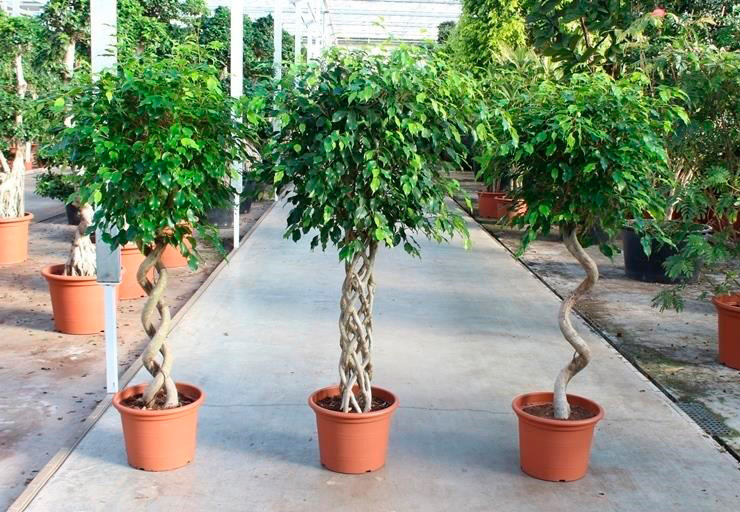
There are many signs and superstitions associated with ficus. Among them, there are those that characterize the plant positively and opposite signs.
Perhaps the worst omen regarding the ficus in the house is connected with the Great Patriotic War. It was noticed that in those houses where the plant lived, the soldiers did not return from the front. This led to the omen that holding a flower at home is not safe.
The second sign of negative impact indicates the ability of the plant to attract envy, gossip and squabbles into the house. Perhaps this sign is due to the fact that before the exotic tree in the house was considered a luxury item. Ficus was not accessible to everyone. Needless to say, wealthy people without ficus have always been the subject of envy and gossip.
Good signs say that a flower brings happiness and good luck. Ficus in the kitchen - to the abundance of food in the refrigerator. It is believed that it contributes to the onset of a long-awaited pregnancy. And in Thailand, this plant is generally considered sacred.
Common Growing Questions
Ficus Benjamin can not be called a moody plant.Subject to the organization of proper care, the cultivation of this ficus will bring more pleasure than hassle.

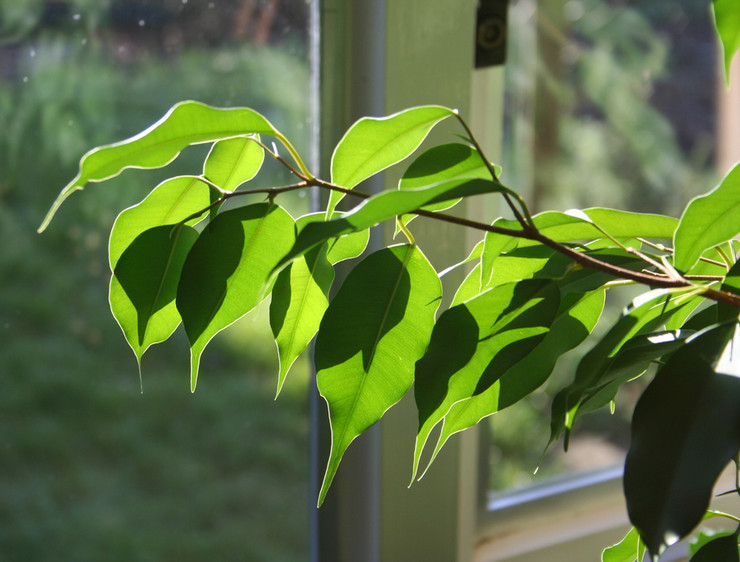
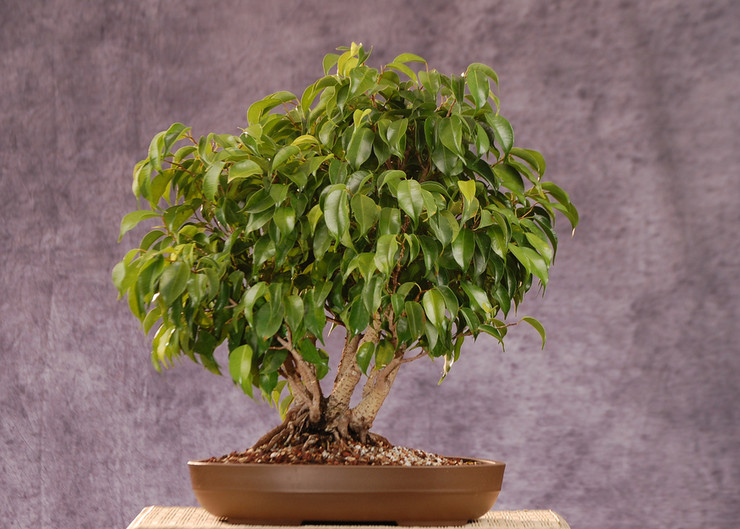
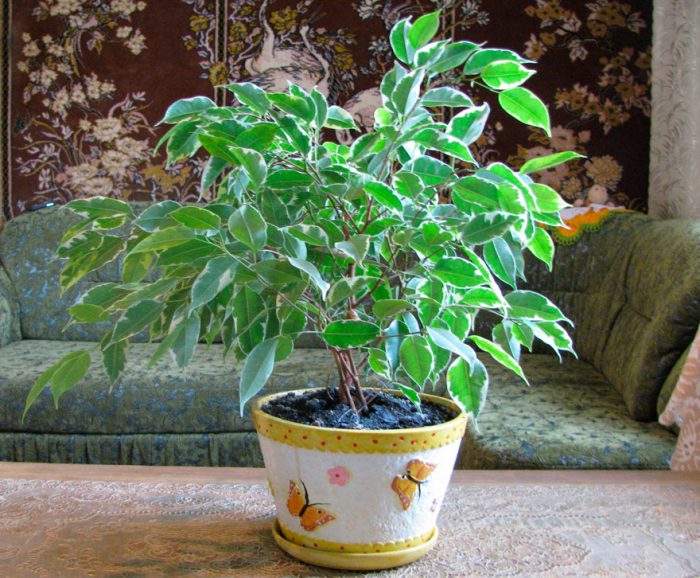



 Sow in the ground, without seedlings: 10 beautiful and unpretentious flowers
Sow in the ground, without seedlings: 10 beautiful and unpretentious flowers Platicodon planting and outdoor care
Platicodon planting and outdoor care Hosta - planting and care in the open ground in the Urals
Hosta - planting and care in the open ground in the Urals Oleander - care and growing at home
Oleander - care and growing at home